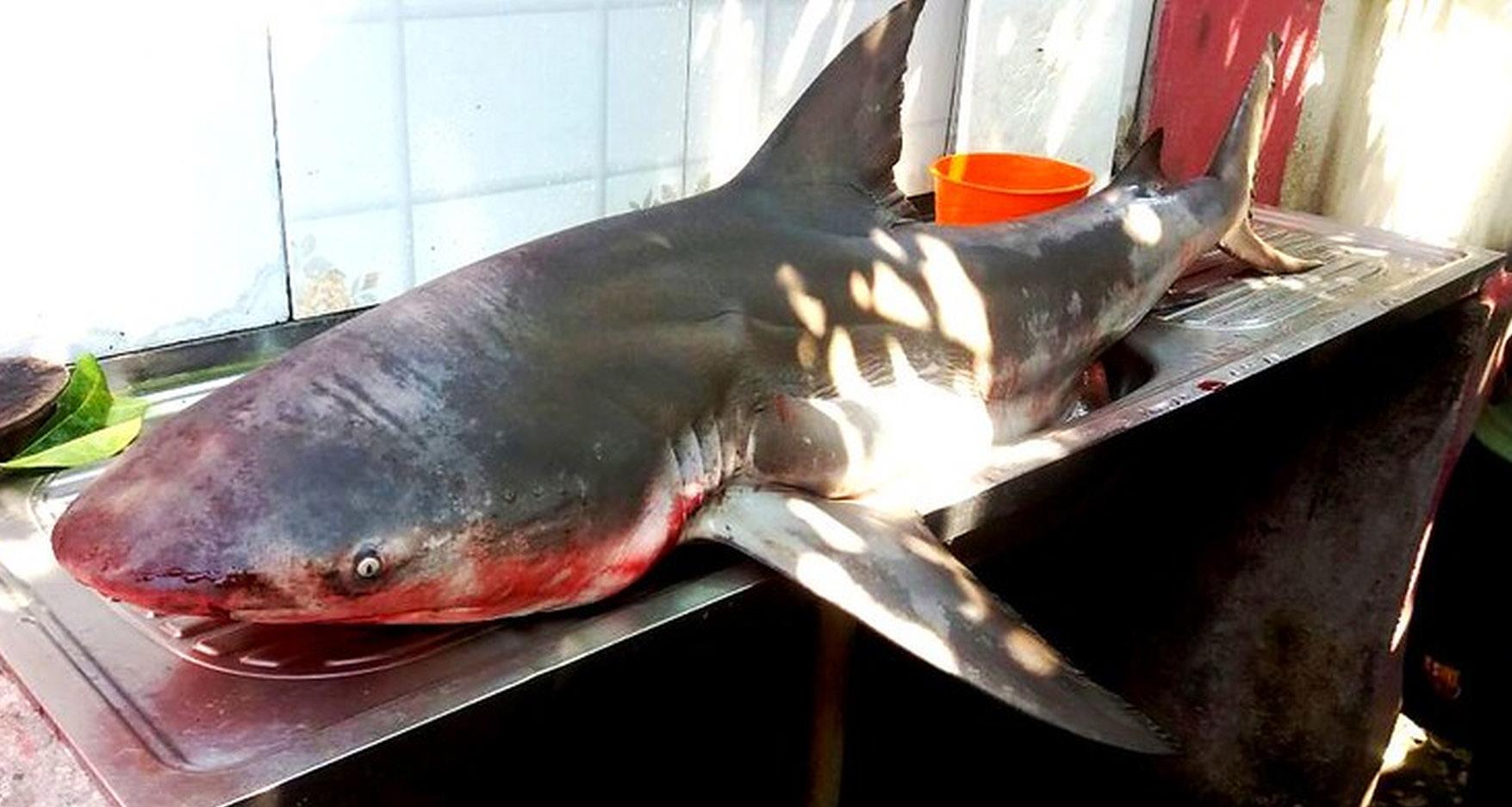
4 minute read
The worldwide distribution of the Bull Shark and an account of its occurrence in low salinity habitats
The worldwide distribution of the Bull Shark Carcharhinus leucas (Valenciennes,1839) and an account of its occurrence in low salinity habitats
Written by Dr Peter Gausmann
Advertisement
Ruhr University Bochum | Bochum, Nordrhein-Westfalen, Germany
Introduction The Bull Shark (Carcharhinus leucas), a cosmopolitan euryhaline elasmobranch species, is famous for its ability to leave marine environments and penetrate far into freshwater bodies around the globe. Most Bull Sharks found in freshwater are immature. Due to the circumstance that many other marine predators (including other sharks) are stenohalyne, the time period spent in rivers and lakes by juvenile C. leucas is valued as an effective strategy to reduce mortality and guarantee a higher percentage of surviving immature individuals. Investigations found that immature Bull Sharks can spend up to four/five years in a purely freshwater environment. Although many scientific publications deal with a particular ecological aspect of this species, no previous study has attempted to account for all the records from fresh and brackish water to quantify these occurrences. The author made a critical review of scientific literature, databases, newspapers, and online media sources that spans more than four years of investigation. Moreover, the information out of these references was used to build an updated and reliable distribution map of C. leucas.
Records in rivers, lakes, and estuaries
The result of 415 global fresh and brackish water localities with evidence of C. leucas highlights the importance of these habitats for the reproduction of this species. The North American and Australian continents were identified as the regions with the most significant numbers of Bull Shark records, underlining that shark research is conducted most intensively in the developed world. From the developing world, such as the west coast of the African continent, only a small number of C. leucas records were derived, highlighting the need for more in-depth research on elasmobranchs in data-poor regions. The record of the farthest freshwater penetration by C. leucas was made in the Amazon River, the largest river of the South American continent, with a recorded distance of 5,080 km from the sea. Despite this, for many large streams inside the known range of C. leucas, such as the Kongo, the Indus, and the Mekong River, until today no records of the Bull Shark were made, which means that, currently, research on freshwater elasmobranchs in rivers of the developing world is not conducted deeply. Furthermore, many Bull Shark records from rivers and lakes are quite old, deriving from the beginning to the middle of the 20th century (e.g., Jamoer Lake, West Papua, Indonesia). It is unclear if and how Bull Sharks still utilize these habitats.
Dependency of low salinity habitats
The results of the author’s study indicate a strong dependency of C. leucas on low salinity habitats for its reproductive behaviour. Estuaries, rivers and river mouths, lakes, and shallow bays of the tropics and subtropics can be considered crucial habitats for the Bull Shark. Therefore, the protection of pristine river systems and associated estuaries and lakes is essential for this species’ life history. However, Bull Sharks were reported even from artificial habitats like urban canals and waterways in metropolitan regions of the USA and Australia (e.g., Miami Canals, Gold Coast Canals). The investigation also shows that C. leucas is habitat-limited due to its dependency on low salinity environments and does not occur in regions that lack rivers and river mouths connected to the sea (e.g., the Red Sea).


Distribution map of Carcharhinus leucas showing major rivers and areas of uncertain presence (“?”) (Gausmann 2021)
Worldwide distribution
Carcharhinus leucas is a cosmopolitan species with a geographical range that includes the coastlines of all major ocean basins (Atlantic Ocean, Indian Ocean, Pacific Ocean) in tropical, subtropical, and warm-temperate regions. By investigating literature, fishery reports, databases, and reliable semi-scientific literature, former gaps in the known distribution of this species were closed. For example, in the Indian Ocean, the Bull Shark shows a continuous distribution from South Africa to Western Australia. Nevertheless, there remain some areas where records of C. leucas could not be confirmed (e.g., California, USA).

Conservation aspects
The investigation by the author also revealed that many of the large rivers where C. leucas has been reported from are showing habitat degradation as a result of intensive river regulation measures. For example, dam buildings, water power plants, and impoundments prevent the movement of Bull Sharks into the upper reaches of several large rivers, such as the Mississippi, the Zambezi, and the Tigris Rivers. Together with the intense fishing pressure that affects nearly all of the world’s currently known shark species, the devaluation of freshwater ecosystems of the tropics and subtropics can be assessed as a further threat for C. leucas, a migratory shark species that is known to rely on low salinity environments.
Carcharhinus leucas, subadult male specimen (~1.5 m TL) captured along the Amazon River at Pinduri (Santarém, Pará, Brazil) (Gausmann 2021)
References
Gausmann, P. (2021) Synopsis of global fresh and brackish water occurrences of the Bull Shark Carcharhinus leucas Valenciennes, 1839 (Pisces: Carcharhinidae), with comments on distribution and habitat use. Integrative Systematics: Stuttgart Contributions to Natural History. 4(1): 55-213. DOI: 10.18476/2021.423083
Heupel, M.R. & Simpfendorfer, C.A. (2011) Estuarine nursery areas provide a low-mortality environment for young Bull Sharks Carcharhinus leucas. Marine Ecology Progress Series. 433: 237–244. DOI: 10.3354/meps09191
Matich, P. & Heithaus, M.R. (2015) Individual variation in ontogenetic niche shifts in habitat use and movement patterns of a large estuarine predator (Carcharhinus leucas). Oecologia. 178(2): 347–359. DOI: 10.1007/s00442-015-3253-2
Werry, J.M., Lee, S.Y., Lemckert, C.J. & Otway, N.M. (2012) Natural or artificial? Habitat-use by the Bull Shark, Carcharhinus leucas. PLoS ONE. 7(11): e49796. DOI: 10.1371/journal.pone.0049796











